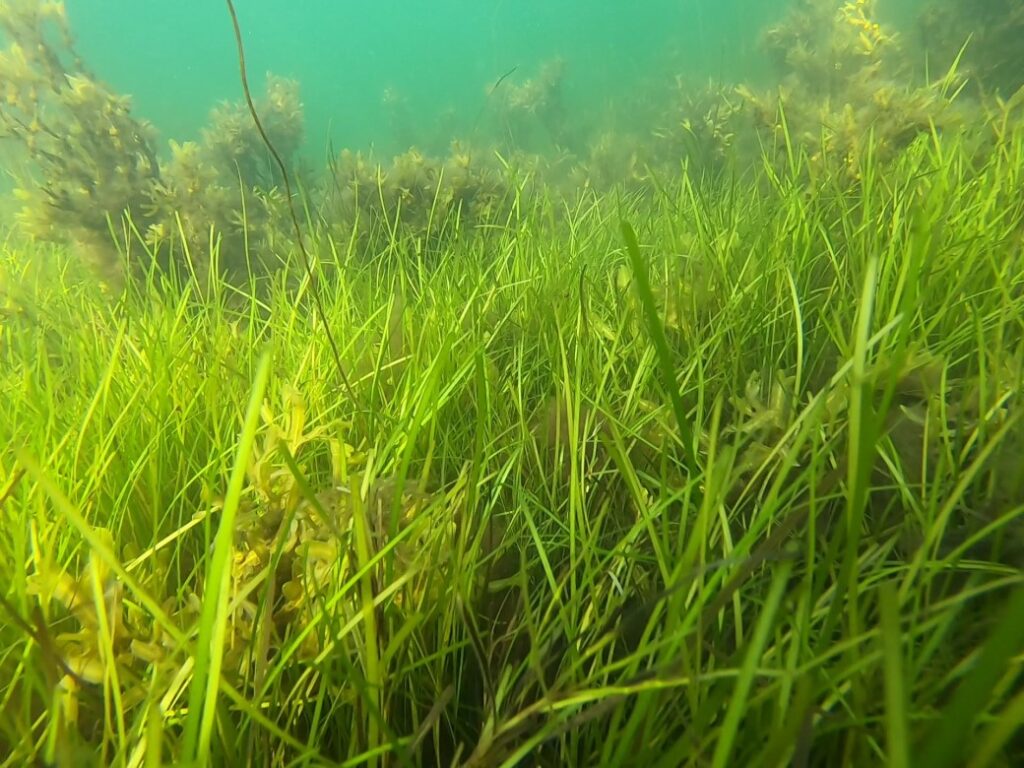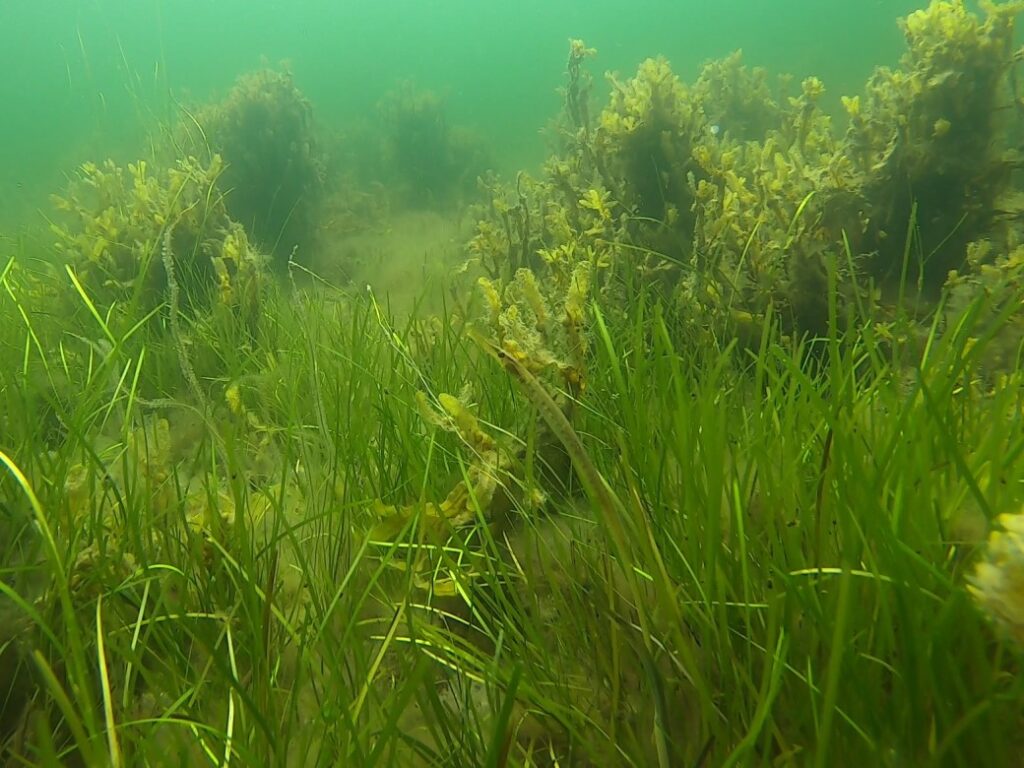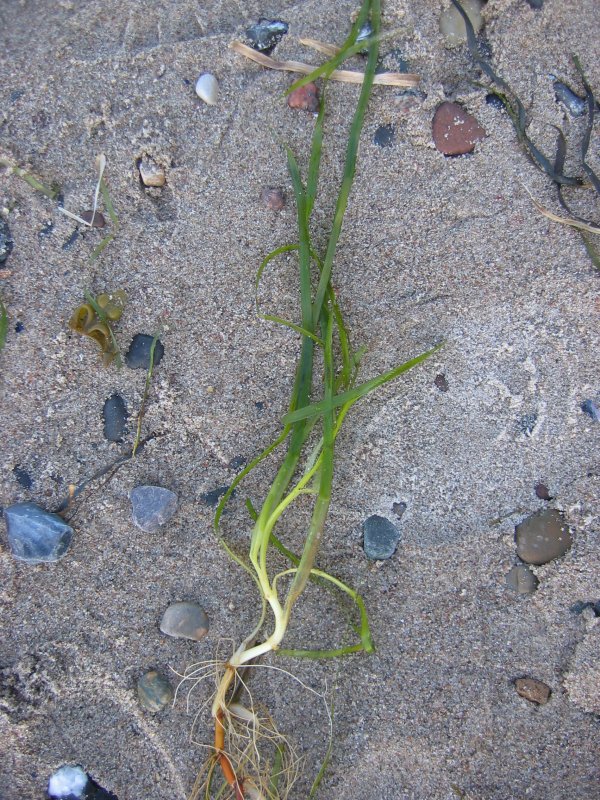Meadows under the surface
Ribersborg, also known as Ribban, is one of Malmö’s most popular beaches. Maybe you’ve been swimming or dog-walking there? But did you know that beneath the surface lies one of the most important ecosystems in the sea? It is home to eelgrass meadows – a habitat that is becoming increasingly threatened.
Eelgrass is a plant that lives in the sea, in shallow water so that sunlight reaches the leaves. It attaches its roots to soft seabeds and forms dense meadows. Eelgrass meadows provide better water, produce oxygen that we can breathe, stabilise the bottoms and can also reduce big waves. In addition, eelgrass meadows are an important nursery for many fish and other marine animals.

Photo: Ellika-Nordström-Malmö-Museer
Nursery in Swedish seas
Eelgrass meadows can be found on both sides of Sweden, along the west coast and in the Baltic Sea up as far as Stockholm’s northern archipelago. The underwater meadows are an important habitat for the marine animals at Ribersborg. They provide good protection from predators for the fry of cod, wrasses, gobies, bullheads, seahorses, pipefish, crabs and shrimp. All these fry and larvae do better around eelgrass beds than in other marine environments. On the eelgrass leaves there are areas where both small and large algae grow. The algae are eaten by invertebrates, which then become food for fish and crustaceans.

Photo: Ellika-Nordström-Malmö-Museer
The eelgrass is under threat!
Over the past 50 years, eelgrass beds have been declining worldwide. The main threats are excess nutrients (eutrophication) from agriculture, overfishing and dredging. Dredging is the process of digging up the seabed to make the water deeper to make way for ports and shipping. When eelgrass beds are destroyed, the water becomes cloudy, and algae can grow to dangerously high levels.
Emissions of nutrients from agriculture leads to eutrophication in the sea. Eutrophication is a major threat to eelgrass meadows, as it leads to algal blooms that take both oxygen and light from the eelgrass.
Photo: Dietmar-Rabich-CC-BY-SA
Algal blooms are a major problem in the Baltic Sea and account for an important part of the threat to eelgrass beds.
Photo: Envisat-satellite-CC-BY-SA
Overfishing is one of the biggest threats to eelgrass meadows.
Photo: John-Leffmann-CC-BY
Dredging destroys the local life in the sea. Here is a large dredging plant in Ystad harbour.
Photo: Jonn-Leffmann-CC-BY
There are many industries around the Baltic Sea that emit environmentally dangerous substances and contribute to eutrophication in the sea.
Photo: Tomasz-Sienicki-CC-BY
Divers planting new meadows
In Sweden, County Administrative Boards have worked hard in recent years to preserve and plant new eelgrass meadows. To create new meadows, seeds and seedlings are transplanted. First, divers collect eelgrass of the right size, at most from every third plant and from two different eelgrass meadows. They can only pick from the same eelgrass meadow once a year. The shoots are then planted out on a seabed where there used to be an eelgrass meadow. The plants are arranged in a pattern that gives them the best chance of survival.

Photo: Kristian-Peters-CC-BY-SA